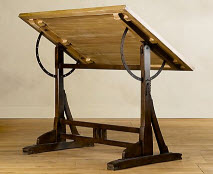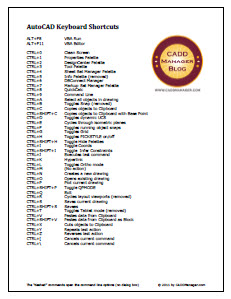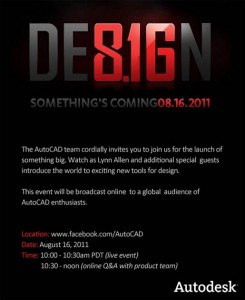“I come to praise drafting and not to bury it.” Not exactly the reversal of a quote you may expect in a Shakespeare play, but appropriate for our context.
I was recently cleaning out my parent’s garage after my father passed away. There was a lot of “junk” that just never got thrown away as they moved from house to house along their 61 years of marriage. Mom wanted to go through it and just get rid of the stuff that Dad kept because she had no clue as to why he may have kept it.
We tossed old parts and pieces from projects around the house. We tossed old magazines that were read and kept for reference, but never gone back to (how many of us do this). We tossed or donated so much stuff that was just collecting dust. Many of the items were placed back on the shelves as they were mementos of days gone by that mom could not part with yet.
One of the things that we discovered was a box full of old building plans that dad had kept. My father was a contractor back in the 50’s and 60’s. He started at a young age as a manual laborer doing roofing and progressed on to start his own firm as a building contractor. He built many custom houses and apartment building (think mid-century modern) and he had kept a few of the plans that must have meant something to him. He did not draw the plans, but he built the designs that were conveyed on these now yellowed, cracked and faded prints.
I grew up looking at these plans. My dad taught me how to read them and what they meant. He showed me what each plan was depicting, how they complimented and supported other plans and how it all made sense to the builder. I would sit and review these plans trying to decipher what they meant and why they were needed. I created in me a love for good plans. I saw many plans that were good and many that were bad. These early memories were the beginnings of my long design related career. Seeing these plans again reminded me of the value embedded in those artisans from days gone by and the need for passing on expertise from one generation to another.
Over the next few posts I will present what I think needs to be passed from those that developed their skills on the drafting board to those who may have never used one. My conclusions are drawn from seeing the recent crop of those entering the job market with very adept technology skills but fewer skills at presenting a design in such a way that it is build-able.
And no – I did not use a drafting table like the one shown above – I am not THAT old 🙂
I first posted the AutoCAD Keyboard Shortcuts back in 2008 and many have downloaded and add to my list.
Here is the updated list for 2012 versions of AutoCAD and the various products that use it as a platform.
Here is the new list: AutoCAD Keyboard Shortcuts-2012
An added bonus – the last page lists discontinued shortcuts from prior versions.
Thanks so much to Heidi Hewitt who helped me with this update.
Over the years many have comments and provided additional shortcuts. You can see the old post with the many comments with these links:
2008 Keyboard Shortcuts – old PDF (2008)
If you are anywhere close to the locations below, you may want to try and drop in on these events…
The AutoCAD User Experience Team is hosting its annual AutoCAD Sneak Peek events in late September. These are free half-day events held in a few different locations, and they’re a great way to get hands-on experience with in-progress features and give your suggestions and feedback directly to the team designing those features. This year the team is running two events that focus on different functionality. To sign up, click one of the survey links below.
Web & Mobile Sneak Peek
This sneak peek highlights features for people who work on AutoCAD from multiple computers or different locations — such as using different workstations, or switching between the office, home, or working out in the field. CAD Managers and day-to-day AutoCAD users of all levels are welcome to attend.
Locations & Dates: San Francisco (Sept 22), San Jose, CA (Sept 28), and Denver (Oct 4-5)
Sign Up for the Web & Mobile Sneak Peek Here
Model Documentation Sneak Peek
This sneak peek is geared toward people in the Mechanical/Manufacturing industry who use AutoCAD, AutoCAD Mechanical, or/and Inventor , and who create and annotate model views (such as section, detail, and projected views) of 3D models (mechanical parts, components).
Locations: San Francisco (Sept 23), Portland/Lake Oswego (Sept 29-30), and Fullerton, CA (Sept 29-30)
Have you ever worked somewhere or with some team that just clicked? Most of us have had this experience at some point.
A group of people just hit it off. They are firing on all cylinders. They know what needs to be done, who is doing what,what can be expected from each member and they hum like a fine tuned machine. When this happens it is a wonderful thing.
The french termed this Esprit de corps. Dictionary.com defines A feeling of pride, fellowship, and common loyalty shared by the members of a particular group.
Fayol defined this as happening when the right people are on the team. Good to Great defines it as the right people on the bus and in the right seat.
He encouraged the development of teamwork, proper interpersonal skills and harmony among the workforce.
One specific thing that Fayol addressed was the writing of memos. He felt that direct person contact was needed at all levels. Conversation is preferred over hardcopy. He went so far as thinking that writing memos to communicate instructions, directions, refinements and adjustments in workers processes without direct conversation was divisive and divided the workers rather than uniting them.
Esprit de corps promotes team spirit and will build harmony and unity within an organization.
Today we call it morale. Morale is a touchy thing – several things can happen to kill it.
Here is a link to a great post by Calvin Sun on TechRepublic – 10 surefire ways to kill morale – he does a great job and mentions several things that I have discussed before
Takeaway: It’s easy to demotivate your staff without realizing you’re doing it. Calvin Sun highlights a few morale-busting behaviors to watch out for.
The sad thing about killing morale is that you can do it without even trying. In the words of a George Strait song, “It just comes natural.” But if you damage morale, you will lower the productivity of your group and create problems for yourself. Look at this list and see whether you recognize yourself in any of these morale-killers.
Nearing the end of Fayol’s list of 14 principles brings us to Initiative.
Many of his principles stand the test of time and especially this one. Allowing personal initiative in employees will garner creativity, energy, personal efforts and more. When people are allowed to work toward an idea that they have come up with or embraced,they work harder. When they have the perspective of personal ownership in something or a stake in the outcome, they work harder and with zeal.
Initiative is a readiness, willingness and ability to initiate action.
How does this work itself out in a CAD environment and what can a CAD Manager do to encourage personal initiative?
Nurturing Initiative
Readiness – Employees need to be ready to initiate things. Readiness comes when you provide the basic environment that allows others to take action. This environment will allow workers access to software and hardware tools that are needed. It also provides (controlled) access to standard files, setups, configurations and troubleshooting tools.
Willingness -Users have to be willing to take action. This comes from an environment that allows mistakes to be made without retribution. It rewards initiative and action. It seeks out those that are willing to do something and makes them heroes. It nurtures the willing to take action. It encourages teamwork and communication so that no one is just off doing their own thing.
Ability – Team members have to have the ability to correct, create and control their work environment (working inside the global firm guidelines). They may be ready and willing – but if they can’t actually make anything happen, then they will soon wander off. Give them access (again, controlled) to more areas as they prove their ability to make the right call.
Initiate Action – They need to actually do something. Initiative is not just complaining or whining about the current situation. It is not letting someone else know about an issue so they can fix it (although it might include this). It is taking action. It is making a call. It is creating or refining a process. Initiative is hands on.
Stability – specifically of employment. Fayol (read more on him here) lived in different times than we do. He encouraged the retention of employees, planning of transitions and he discouraged employee turnover.
These days we see firms that are forced to lay off employees. It has happened to me three times in my career so far. Each time the economy forced the firms to make hard choices and set directions that impacted me and many others at my firms. Some of you may have had this same thing happen to you. That is not what this topic is about. Many firms make great plans and try to retain employees even through hard times.
But there are others that regularly turn over employees. This churn is really costing them money. The finding of a new employee and the training and learning curve impact firms so much. Some firms seem to work longer term employees out of their workforce and replace them with lower cost newer employees thinking they are saving money. They may not be. Other firms pull people in and overwork them and burn them out so that they leave just to catch their breath.
Stability of tenure at a firm means that the employees are more productive. they understand the company values and goals. They align themselves with the targets that the firm sets. They have learned the hidden procedures that are not documented. They know how to get things done through and around the rules. They have gathered extensive knowledge of the products and output of the firm. They are valuable and should not just be tossed aside. They have developed company loyalty and will give additional efforts when needed.
From the US Bureau of Labor Statistics…
“There were 3.1 million job openings on the last business day of June, [2010] the U.S. Bureau of Labor Statistics reported today. The hires rate (3.1 percent) and separations rate (3.1 percent) were again little changed over the month. This release includes estimates of the number and rate of job openings, hires, and separations for the total nonfarm sector by industry and by geographic region.” Read it here
That is 100% turnover in numbers – but that does not reflect that the 3.1% who left a job ended up taking the 3.1% that were open. So the impact on firms was a loss of employees and a hiring of new employees. This impacts productivity.
A CAD Manager can assist in this effort by seeking to encourage other managers (the ones that actually hire the employees) to think long term. They can let managers know who has made progress and learned the system of things. The CAD Manager can assists in getting new employees advanced quicker through educations and training. They can inform other managers as to who is a great CAD user and who may not be.
Fayol calls it Equity. I call it treating people right.
His concept is not to just give people what they deserve, which is justice, but to give them what would be considered kindness. This is being gracious in place of demanding. Understanding in place of legalistic requirements.
Treating people and specifically those that work with you and for you with the utmost kindness and gentleness will go farther than strictness and no compassion. It does not mean that you have no rules or deadlines or consequences for actions. It means that you do have these things sprinkled with understanding, flexibility (at times) and a listening ear.
How this works out in the workplace is that you treat all people with fairness and kindness. This is not saying that you are a cowering leader or a watered down manager. On the contrary, you need to be strong and dynamic in your focus on getting things done. But not at the expense of relationships. You need to balance your project focus and your people focus.
Getting things done and leaving a trail of disgruntled employees in your wake will make the next project even tougher to complete. Getting things done on time by driving people too hard will make them reticent to work with you in the future. Not too soft and not too hard. Kind of like the three bears beds. If you are too soft with people, things won’t get done. If you are too hard, people won’t want to work with you. It is a delicate dance at times.
Being fair with people and treating them with equity and equality means:
- You tell them what is expected up front. Deadlines are defined. Requirements are in place. When they join the team or effort,they know what is expected.
- You should expect them to achieve what they said they would. You may even define up front what might happen if they do not deliver. You may want to let them know the consequences of failure to deliver.
- You don’t change the rules without their agreement. Don’t change the process, deadlines, requirements or anything else unless they know about it and agree to continue. Let them leave the team if things change on them. Sometimes the deadlines change and it is not your fault. Others define requirements and change them and you need to let the team know. Give them a gracious way out.
- You listen to the reasons people give for missing deadlines or under-delivering and then (like a judge) define what would be fair going forward. Yell at them? Give them some slack? Take them off the team? Adjust your expectations?
- You don’t play favorites. Give the good task and tough tasks to everyone. Do not give the new, fun stuff to your buddies and the harder tasks to others.
- You are disciplined in your application of fairness.
- You don’t expect too much from people who may not be able to deliver.
- You set the bar so that it is higher than where people may be, but it is attainable.
Order.
Most people like things to be orderly. Even those that are more free wheeling have some order in most areas of life. We are forced to be orderly in many ways by the things we interact with on a daily basis. Get in line, take your turn,do this first, then that…
Henri Fayol (see this post) thought that every person and every part should have a place. A place for everything and everything in its place. Further he thought that every person and the material they needed to get their job done should be in the right place at the right time.
The CAD Manager should attempt to put the right people (the most advanced users) on the right projects at the right time.
Here is what I mean. The CAD Manager usually knows who the best users are. He or she also knows what projects are having troubles. She or he also knows when the most critical time to avoid problems are on projects – at the beginning.
CAD Managers should pay attention to when projects start and who is assigned to work on them. They should try to get a good user on the project at the start. In fact, I think that the CAD Manager should have a “tiger team” to get projects started off correctly. This team would be given some time to set up a project and to get the model and files set up correctly. Sometimes the CAD Manager is the one that sets up project directories but then they are not give time (or have the time) to get the files set up so that all things are done in an orderly manner.
Convincing the PM to allow the time and team to be applied as needed can be tough, but the rewards can be rewarding.




